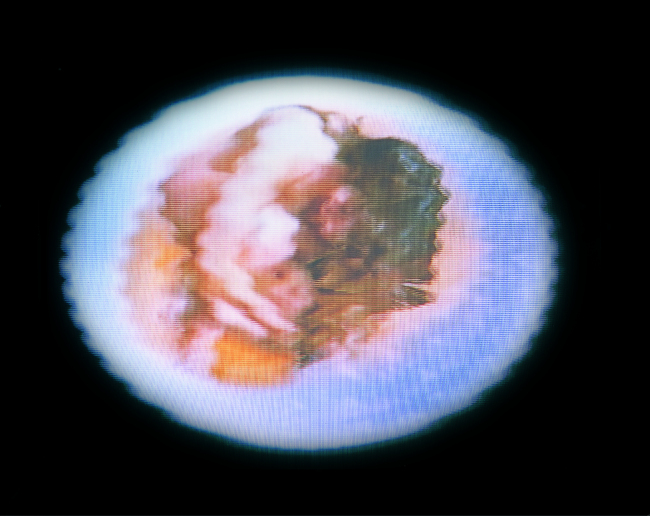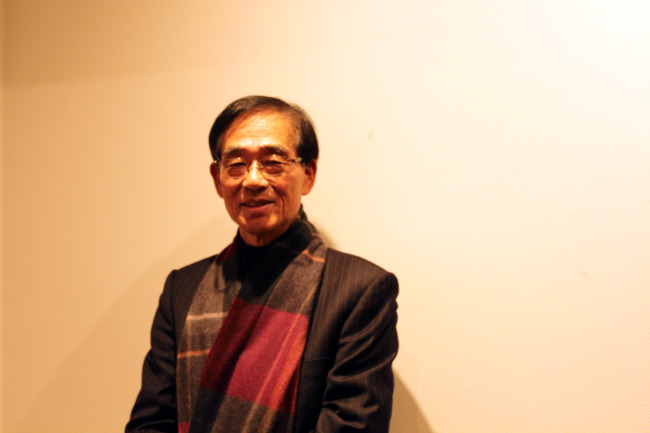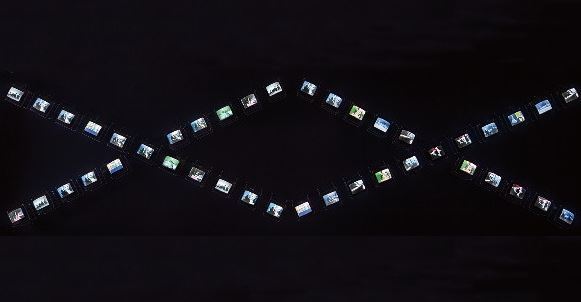Keeping Nam June Paik’s legacy alive
Paik’s technical assistant recalls days with the video art pioneer in time for 9th anniversary of his passing
By Lee Woo-youngPublished : Jan. 20, 2015 - 20:03
No one better predicted how mass media and the Internet would shape our lives today than Nam June Paik. In 1974, the visionary Korean artist came up with the term “Electronic Superhighway,” coined from the U.S. interstate highway system to foretell the Internet’s complex network.
A pioneer in video art, Paik had so many new ideas that had never been thought of. But to visualize them, he needed technological assistance.
Enter Lee Jung-sung. For over 20 years, the electronics technician worked with Paik, helping him turn his ideas into reality.
Now, nine years after the artist’s death, the 71-year-old assistant still travels the world to museums and galleries that need his hand to fix Paik’s works.
A pioneer in video art, Paik had so many new ideas that had never been thought of. But to visualize them, he needed technological assistance.
Enter Lee Jung-sung. For over 20 years, the electronics technician worked with Paik, helping him turn his ideas into reality.
Now, nine years after the artist’s death, the 71-year-old assistant still travels the world to museums and galleries that need his hand to fix Paik’s works.


“I had a dream about Paik four days ago. He was as healthy as ever,” Lee said over dinner with reporters after a press preview of the Nam June Paik exhibition at Hakgojae Gallery last Friday. The exhibition, which brings together 12 works of Paik to commemorate the ninth anniversary of his passing, opens Wednesday.
The electronics expert started working with Paik in 1985. His first project for Paik was “The More the Better,” a huge video tower currently on display at the Museum of Modern and Contemporary Art, Korea. Lee installed images on the screens that Paik wanted to show.

“I even created a ‘video divider’ that sends image signals to monitors, which did not exist at the time,” he said.
They had the “best partnership,” Lee recalled.
“The teacher explained to me the concept of his work in drawings, sometimes on a piece of napkin,“ he said, referring to the late artist. Paik was more than 10 years older than him.
Sometimes, Paik didn’t show up to check on the process until two to three days before the scheduled opening of an exhibition. Other times, the two worked side by side to finish well before the deadline, he explained.
The most challenging, time-consuming project was “Megatron,” which exists in three editions that now belong to separate collections at the Smithsonian Art Museum, Seoul Museum of Art and Soma Museum in Seoul.
Lee had to figure out how to integrate different moving images shown on over 200 monitors that comprise the billboard-sized work.
The work shows a mix of diverse images, including animated images, real images from the Seoul Olympics, Korean folk rituals and modern dance.
“It took us four to five months to complete the work. The concept was really tricky. It wasn’t something I could make in a couple of days,” he said.
Another work, “W3,” was the result of their in-depth study and research to enable five different images to stay on a screen for one-sixth of a second before moving on to another screen. Paik was so precise about the one-sixth second rule that he measured the time carefully until the last minute of the clip.
“Of all things, the teacher wanted viewers to enjoy his works. He once said, ‘If a viewer stays in front of my work for three minutes, that would be the best honor,’” Lee said.
Nam June Paik Art Center in Yongin, Gyeonggi Province, highlights televisions, Paik’s favorite artistic medium, in the anniversary exhibition scheduled to begin Jan. 29, the day of Paik’s death. Before he died, Paik once called the provincial government-funded art center “The House Where Nam June Paik Lives Long.” The art center commemorates Paik with a biennial artist award and regular exhibitions of young artists with innovative and creative ideas.
The Nam June Paik exhibition at Hakgojae Gallery ((02) 720-1524) continues through March 15. The Nam June Paik Art Center ((031) 201-8571) is holding the anniversary exhibition “TV is TV” from Jan. 29 to June 21.
By Lee Woo-young (wylee@heraldcorp.com)












![[Today’s K-pop] BTS pop-up event to come to Seoul](http://res.heraldm.com/phpwas/restmb_idxmake.php?idx=644&simg=/content/image/2024/04/17/20240417050734_0.jpg&u=)




![[KH Explains] Hyundai's full hybrid edge to pay off amid slow transition to pure EVs](http://res.heraldm.com/phpwas/restmb_idxmake.php?idx=652&simg=/content/image/2024/04/18/20240418050645_0.jpg&u=20240418181020)

![[Today’s K-pop] Zico drops snippet of collaboration with Jennie](http://res.heraldm.com/phpwas/restmb_idxmake.php?idx=642&simg=/content/image/2024/04/18/20240418050702_0.jpg&u=)